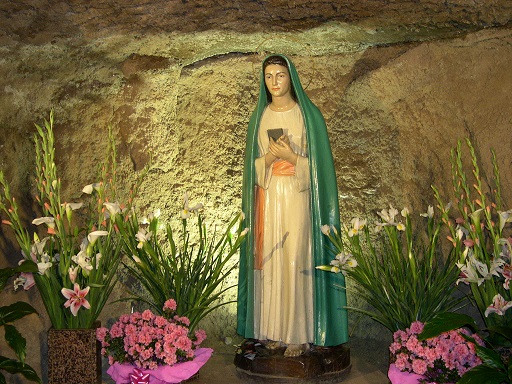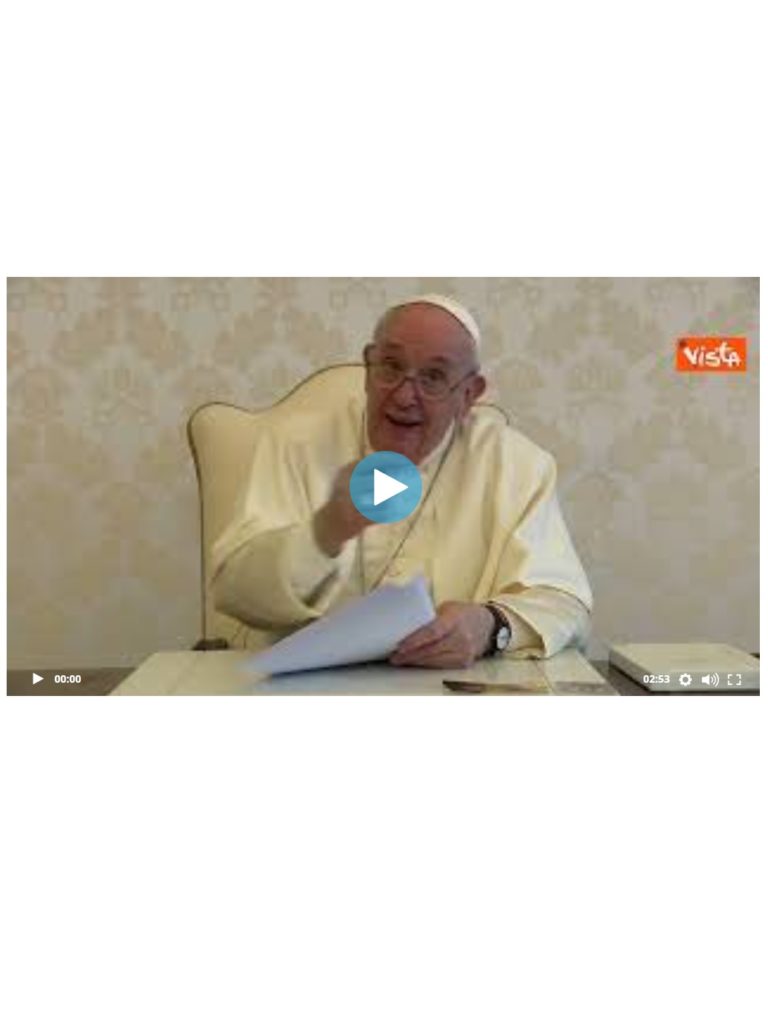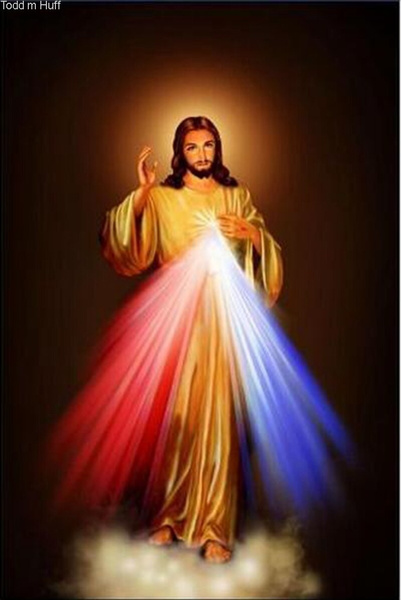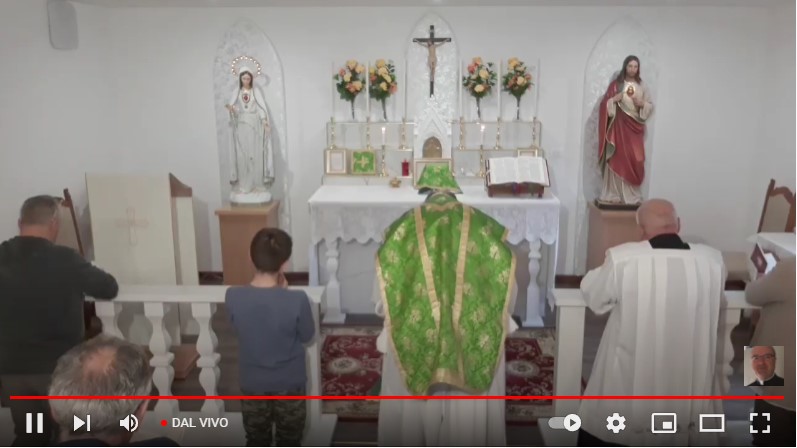


Tra le religioni che si possono dimostrare razionalmente false rientra la religione Sikh.
Premettiamo alcune notizie.
Il sikhismo è una religione monoteista nata nella città di Anandpur Sahib, nell’India del XV secolo, basata sull’insegnamento di dieci guru che vissero in India tra il XV e il XVIII secolo. Una delle più giovani tra le religioni maggiori, è la quinta religione organizzata più grande del mondo, comprendente circa 25 milioni di Sikh all’inizio del XXI secolo.[1] Il sikhismo si è sviluppato dagli insegnamenti spirituali di guru Nanak, il primo guru (1469–1539), e dei nove Guru Sikh che gli succedettero. Il decimo guru, Gobind Singh (1676-1708), nominò suo successore la scrittura Guru Granth Sahib, portando a termine la linea dei Guru umani e stabilendo le Scritture come guida spirituale eterna e religiosa (da Wkipedia).
Il primo dei nove guru che ha fondato il sikkhismo, tale Guru Nanak Dev ji, ha insegnato che vivere una “vita attiva, creativa e pratica” di “veridicità, fedeltà, autocontrollo e purezza” è al di sopra della verità metafisica e che l’uomo ideale “stabilisce l’unione con Dio, conosce la Sua volontà ed esegue quella volontà “.

“Pope Francis’ new foundation appears to have more in common with French Revolution than with Catholicism“, LifeSiteNews, 17 dicembre 2021.
VATICAN CITY (LifeSiteNews) — A “Fratelli tutti Foundation” attached to Saint Peter’s Basilica in Rome was launched on Wednesday by Pope Francis who signed a decree that officially established the new entity. It aims at encouraging “fraternity and dialogue” among pilgrims and tourists visiting the Vatican.
The document was signed on December 8, the Feast of the Immaculate Conception, and released to the Vatican Press office on Wednesday, together with the news of the nomination of its president, Cardinal Mauro Gambetti, archpriest of the Basilica, vicar general for the Vatican State, and president of the Fabric of Saint Peter. It is in this last capacity, as the head of the institution tasked with the conservation and maintenance of the Basilica, that Gambetti has now been given a free hand for the cultural and spiritual animation of the church itself and Saint Peter’s Square, within the “embrace” of the colonnade of Bernini, as the papal decree put it.
Cardinal Gambetti, it should be said, was the initiator of the new Foundation; he presented his brainchild to the world last October, describing it as a “dream” that was born in Assisi even before Fratelli tutti was written, but adding that the Encyclical is “the vision for which we should be striving globally.”
The example of what is afoot at Notre Dame of Paris immediately springs to mind: as LifeSite readers know, plans for a makeover of the Gothic jewel’s interior include creating a “discovery trail” for people of all religions, leading through chapels dedicated to the five continents and messages of the Old and New Testaments and culminating with Laudato si’. The revamping of Notre Dame is set to include benches with modern lighting systems, elements of “contemporary art” and music and light projections in the side-chapels, “creating the conditions for an experience” that would appeal to the cathedral’s many non-Catholic visitors.
The revamping of Notre Dame wants a clear break from traditional liturgy, as the designer of the revamp, Father Gilles Drouin, a staunch promoter of Traditionis custodes, has made clear. In interviews he has rejected what he says is a “Tridentine” conception of the liturgy as a “theater,” instead favoring an “active participation” that blurs the limits between the priest and the faithful attending Mass.
No practical details of upcoming changes or “animations” to St. Peter’s Basilica have been given yet, but a parallel can surely be drawn regarding Cardinal Gambetti, a 52-year-old Franciscan hand-picked by Pope Francis last year to receive the red hat. Gambetti has banned the traditional Latin Mass from the nave and side-chapels of Saint-Peter’s, relegating individual priests and groups to the Crypt and insisting that Masses within the central church of Christendom be in the vernacular, preferably Italian, and concelebrated.
He is certainly a perfect fit for presidency of the new “Fratelli Tutti Foundation” based on Pope Francis’ eponymous Encyclical. Fratelli tutti has already borne fruits such as the relativistic Abu Dhabi Declaration proclaiming that the “diversity of religions” was “willed by God in his wisdom.”
How this will play out in and around the Basilica of Saint Peter, where Catholics venerate the tomb of Saint Peter, the “rock” on whom the Church was built, can already be sensed in the few elements of the Foundation’s statutes that have been quoted by the Italian media. Key words and phrases are “humanism,” “building social alliances,” and, of course, “bridges,” the creating of “events,” “trails,” “experiences” and “spiritual exercises,” and “promoting dialogue with cultures and the other religions based on the themes of the Pope’s last Encyclical.”
In a communiqué published on Wednesday by the Holy See, the language is even more revealing: ten “purposes” are quoted in detail, and they certainly deserve to be reproduced in full. Here is our translation of the statement:
The Foundation’s mission areas are:
The purposes of the Foundation are included in Article 3 of the Statute:
“The Foundation has purposes of solidarity, training, dissemination of art and particularly sacred art; it promotes synodality, the culture of fraternity and dialogue. To this end, the Foundation:
To carry out its activities, the Foundation will be chaired by Cardinal Mauro Gambetti, a nine-member Board of Directors, a single Auditor, and a General Secretary. The future guiding bodies of the Foundation will be: the General Council composed of members of the Vatican Dicasteries to which the Foundation’s mission themes pertain, and the Sustainability Committee in which the Foundation’s benefactors are represented.”
References to God, the Holy Trinity, Our Lord Jesus Christ, and His Beloved Mother are totally absent from this catalogue of politically correct “values,” among which environmentalist concerns and “fraternity between believers and non-believers” are, of course, paramount.
For French observers, the mention of “liberty, equality, and fraternity” in objective VI, together with a nod to “fraternal humanism,” has obvious Masonic overtones. A carbon copy of the motto of the French Republic, Liberté, Egalité, Fraternité, the words point to the French Revolution that allowed “no liberty for the enemies of Liberty” and understood the concept as the right to think and do what one wills, without regard for the superior right of truth and divine law.
SUBSCRIBE TO OUR DAILY HEADLINES US Canada Catholic
“Equality” would soon degenerate into collectivism, socialism, or communism, and the overthrowing of natural hierarchies, while “Fraternity” is not so much a desire for true love and friendship among human beings as a rejection of paternity and its God-given authority.
Of course, all these words have their true value but, taken together and made absolute, they contradict each other and, improperly defined, they were the basis for the revolutionary “Terror” of 1792 and the following years when the Vendée region of France underwent a legal genocide as ordered by the Parisian revolutionaries.
The Pope’s chirograph (i.e., papal decree limited to the Roman Curia) was also devoid of any obvious Catholic references, being content to refer to “religion” and “spirituality:”
I have learned with satisfaction that the Fabric of Saint Peter, together with some of the faithful, wish to join together to establish a Foundation of Religion and Worship intended to collaborate in spreading the principles set forth in my recent encyclical, Fratelli tutti, in order to encourage initiatives linked to spirituality, art, education and dialogue with the world, around Saint Peter’s Basilica and in the embrace of its colonnade.
I therefore gladly accede to the request expressed to me to establish in the State of Vatican City an autonomous foundation for the above-mentioned purposes.
By virtue of my apostolic power in the Church and my sovereignty in Vatican City, I establish the Fratelli tutti Foundation as a public canonical juridical person and as a civil juridical person with its headquarters in Vatican City State.
The Foundation will be governed by the canonical laws, in particular by the special norms that regulate the Bodies of the Holy See, by the civil norms in force in the Vatican City State, and by the attached Statute which I simultaneously approve.
From the Vatican, 8 December 2021
FRANCIS
The Foundation’s first public initiatives are expected to take place early next year. Cardinal Gambetti gave an interview to Vatican News last October in which he said the new Foundation will be a “polyhedron” (one of Pope Francis’ stock words) made up of “formation and dialogue, sacred art and economy, young people, and startups.” All will be welcome there “to find the direction of a common road towards the future… in harmony with the magisterium of Pope Francis,” he said.
Much of his interview is made up of variations and repetitions on this theme of a “common road.” But beyond the glib Newspeak, there is a clear, political objective that smacks of global spirituality and global governance. As Gambetti puts it:
We already have in mind, probably at the beginning of next year, some initiatives linked to the dual theme of art and spirituality, which are the first,and also the simplest, to activate. But then we are also thinking of something on formation, and it is probable that we will begin with young people, although this is not yet decided because we need to study it well. In any case, the idea is to have a few weeks of residential meetings to allow people to get together, to share, to think about some issues and then try to bring out something new or a new way. For example, if we think of young people, it could be a startup in some segment of the economy, mobility, climate, and environmental issues. Or if we turn to the world of business, putting together people who have managerial roles, or in any case important ones, we could look at the theme of new models of development.
Are we also looking at politics?
We could also think about new ways of doing politics, which are perhaps a bit tired or suffocated by the problems that exist, problems that are obviously real and need to be addressed. But along with this fatigue, we also need to look beyond, to the future. If we do not help each other imagine the future, or a society in which we wish to live, not just see others live it, perhaps politicsin particular will lose a bit of its own vocation.
This all sounds very ambitious for a Foundation centered on a Basilica and a Square – but so much in tone with the objectives of the global “élite” that it can certainly hope for its support.

(1) REFUTAZIONE DEL MODERNISMO TEOLOGICO, 4 Marzo 2021 Max Tex,
https://www.proselitismodellascienza.it/2021/03/04/refutazione-del-modernismo-teologico/
(2) LA FALSA RELIGIONE DEL MODERNISMO, 4 Marzo 2021 Max Tex,
https://www.proselitismodellascienza.it/2021/03/04/la-falsa-religione-del-modernismo/
(3) GALLERIA DEL MODERNISMO E VIZI INNOMINABILI DELLA FALSA CHIESA, 11 aprile 2021, Max Tex,

Nell’anno decimoquinto dell’impero di Tiberio Cesare, essendo governatore della Giudea Ponzio Pilato, Erode tetrarca della Galilea, e Filippo, suo fratello, tetrarca dell’Iturea e della regione Traconítide, e Lisània tetrarca di Abilene, essendo sommi sacerdoti Anna e Càifa: la parola del Signore venne nel deserto su Giovanni, figlio di Zaccaria. (Luc 3:1-6)
E’ il lunedi che precede l’Avvento. Abbiamo riascoltato le letture di ieri.
San Paolo dice che quando ilò Signore verra’ saranno svelati i pensieri deio cuori e la verita’ sara chiara. Infatti solo il Signore puo’ giudicare.
Quando avverra’ il grande avvertimento, il Signore ci fare capire in quale stato stia la nostra coscienza. Ma saranno chiare anche le cose che ci circondano e il compito che dovremo svolgere.
Vedremo quindi chiaramente noi stessi e le cose che ci circondano.
Nel Vangelo, Giovanni Battista viene investito da Dio del compito di annunciare l’Avvento di Gesu’.
Il compito dei fedeli e’ prepararsi appunto all’Avvento facendo la Sua volonta. La sua luce ci avvolgera’ e ci salvera’!
Sia lodato Gesu’ Cristo! Sempre sia lodato!
__________________
(*) Questo commento e’ scritto in tempo reale durante l’omelia. Mi scuso per l’eventuale misinterpretazione delle parole di Don Enrico.
In the fifteenth year of the empire of Tiberius Caesar, being governor of Judea Pontius Pilate, Herod tetrarch of Galilee, and Philip, his brother, tetrarch of Iturea and of the Traconítide region, and Lysània tetrarch of Abilene, Anna and Caiaphas being high priests : the word of the Lord came in the wilderness upon John, son of Zechariah. (Luke 3: 1-6)
It is the Monday before Advent.
We listened to yesterday’s readings. St. Paul says that when the Lord comes, the thoughts of hearts will be revealed and the truth will be clear. In fact, only the Lord can judge.
When the great warning occurs, the Lord will make us understand what state our conscience is in.
But the things around us and the task we will have to carry out will also be clear.
We will therefore clearly see ourselves and the things around us. In the Gospel, John the Baptist is invested by God with the task of announcing the Advent of Jesus.
The task of the faithful is precisely to prepare for Advent by doing His will. Its light will envelop us and save us!
Praised be Jesus Christ! Always be praised!
________________
(*) This comment is written in real time during the homily. I apologize for any misinterpretation of Don Enrico’s words.

Evangelium Luc 3:1-6
Anno quintodécimo impérii Tibérii Cǽsaris, procuránte Póntio Piláto Iudǽam, tetrárcha autem Galilǽæ Heróde, Philíppo autem fratre eius tetrárcha Iturǽæ et Trachonítidis regionis, et Lysánia Abilínæ tetrárcha, sub princípibus sacerdotum Anna et Cáipha: factum est verbum Domini super Ioannem, Zacharíæ filium, in deserto. Et venit in omnem regiónem Iordánis, prǽdicans baptísmum pæniténtiæ in remissiónem peccatórum, sicut scriptum est in libro sermónum Isaíæ Prophétæ: Vox clamántis in desérto: Paráte viam Dómini: rectas fácite sémitas eius: omnis vallis implébitur: et omnis mons et collis humiliábitur: et erunt prava in dirécta, et áspera in vias planas: et vidébit omnis caro salutáre Dei.
Gospel Luke 3:1-6
Now in the fifteenth year of the reign of Tiberius Caesar, when Pontius Pilate was procurator of Judea, and Herod tetrarch of Galilee, and Philip his brother tetrarch of the district of Abilene, during the high priesthood of Annas and Caiphas, the word of God came to John, the son of Zachary, in the desert. And he went into all the region about the Jordan, preaching a baptism of repentance for the forgiveness of sins, as it is written in the book of the words of Isaias the prophet. The voice of one crying in the desert, ‘Make ready the way of the Lord, make straight His paths. Every valley shall be filled, and every mountain and hill shall be brought low, and the crooked ways shall be made straight, and the rough ways smooth; and all mankind shall see the salvation of God.’

Nell’anno decimoquinto dell’impero di Tiberio Cesare, essendo governatore della Giudea Ponzio Pilato, Erode tetrarca della Galilea, e Filippo, suo fratello, tetrarca dell’Iturea e della regione Traconítide, e Lisània tetrarca di Abilene, essendo sommi sacerdoti Anna e Càifa: la parola del Signore venne nel deserto su Giovanni, figlio di Zaccaria. (Luc 3:1-6)
E’ il lunedi che precede l’Avvento. Abbiamo riascoltato le letture di ieri.
San Paolo dice che quando ilò Signore verra’ saranno svelati i pensieri deio cuori e la verita’ sara chiara. Infatti solo il Signore puo’ giudicare.
Quando avverra’ il grande avvertimento, il Signore ci fare capire in quale stato stia la nostra coscienza. Ma saranno chiare anche le cose che ci circondano e il compito che dovremo svolgere.
Vedremo quindi chiaramente noi stessi e le cose che ci circondano.
Nel Vangelo, Giovanni Battista viene investito da Dio del compito di annunciare l’Avvento di Gesu’.
Il compito dei fedeli e’ prepararsi appunto all’Avvento facendo la Sua volonta. La sua luce ci avvolgera’ e ci salvera’!
Sia lodato Gesu’ Cristo! Sempre sia lodato!
__________________
(*) Questo commento e’ scritto in tempo reale durante l’omelia. Mi scuso per l’eventuale misinterpretazione delle parole di Don Enrico.
In the fifteenth year of the empire of Tiberius Caesar, being governor of Judea Pontius Pilate, Herod tetrarch of Galilee, and Philip, his brother, tetrarch of Iturea and of the Traconítide region, and Lysània tetrarch of Abilene, Anna and Caiaphas being high priests : the word of the Lord came in the wilderness upon John, son of Zechariah. (Luke 3: 1-6)
It is the Monday before Advent.
We listened to yesterday’s readings. St. Paul says that when the Lord comes, the thoughts of hearts will be revealed and the truth will be clear. In fact, only the Lord can judge.
When the great warning occurs, the Lord will make us understand what state our conscience is in.
But the things around us and the task we will have to carry out will also be clear.
We will therefore clearly see ourselves and the things around us. In the Gospel, John the Baptist is invested by God with the task of announcing the Advent of Jesus.
The task of the faithful is precisely to prepare for Advent by doing His will. Its light will envelop us and save us!
Praised be Jesus Christ! Always be praised!
________________
(*) This comment is written in real time during the homily. I apologize for any misinterpretation of Don Enrico’s words.






“Come sta scritto nel libro del profeta Isaia: Voce di uno che grida nel deserto: preparate la via del Signore.” (Luc 3:1-6)
E’ la quarta domenica di Avvento. A destra dell’altare splende una luce. Viene da Betlemme, il luogo di nascita di Gesu’! Si tratta di una tradizione bellissima degli scout austriaci e italiani. E’ un sacramentale che impreziosisce la cappella. Ma soprattutto e’ la presenza del Signore che conta! Che e’ qui con noi per incoraggiare il nostro cammino.
Abbiamo la benedizione del Signore!
Chi puo’ negarlo? Chi potra mai farlo? Il Signore puo’ fare dei miracoli! Non si puo’ andare contro la verita’! Molti ci hanno provato, cominciando dai Farisei, dai Massoni, dai falsi cristiani.
La nostra guida e’ Gesu’ Cristo! Che non ci fa mancare nulla! La luce della candela ci ricorda Betlemme, il luogo da cui viene la Luce del Mondo, la Luce dell’Amore che spezza la paura del nulla e dell’incognito. Di fronte a Lui il male sparisce e si annulla!
Per curare il mondo occorre la luce. Si, ma non e’ la luce dell’anticristo!
La malattia del mondo attuale e’ la manipolazione!
Ma e’ solo la luce vera, che e’ Gesu Cristo, che puo’ salvarci! Il Signore ci salvera’ cancellando i malvagi, annullando i crimini che i malvagi stanno compiendo nei confronti dell’umanita’.
Gesu’ sta per manifestarsi, glorioso e vittorioso! Anche noi attendiamo nella fede come gia’ Elisabetta, Zaccaria, Giovanni Battista, Maria e Giuseppe! Anche noi vogliamo essere i primi, in prima fila ad attendere il Signore. Nella carita’, nella pazienza, nella fede!
Sia lodato Gesu’ Cristo! Sempre sia lodato!
__________________
(*) Questo commento e’ scritto in tempo reale durante l’omelia. Mi scuso per l’eventuale misinterpretazione delle parole di Don Enrico.
“As it is written in the book of the prophet Isaiah: Voice of one crying in the wilderness: prepare the way of the Lord.” (Luke 3: 1-6)
It is the fourth Sunday of Advent. A light shines to the right of the altar. It comes from Bethlehem, the birthplace of Jesus!
It is a beautiful tradition of the Austrian and Italian scouts. It is a sacramental that embellishes the chapel.
But above all it is the presence of the Lord that counts! He is here with us to encourage our journey. We have the blessing of the Lord!
Who can deny it? Who can ever do it? The Lord can work miracles! You can’t go against the truth!
Many have tried, starting with the Pharisees, the Freemasons, the false Christians. Our guide is Jesus Christ!
That doesn’t make us miss anything! The light of the candle reminds us of Bethlehem, the place from which the Light of the World comes, the Light of Love that breaks the fear of nothingness and the unknown.
In front of him, evil disappears and is annulled! Light is needed to heal the world. Yes, but it is not the light of the antichrist! The disease of the world today is manipulation! It is only the true light, which is Jesus Christ, which can save us!
The Lord will save us by erasing the wicked, undoing the crimes that the wicked are committing against humanity. Jesus is about to reveal himself, glorious and victorious!
We too wait in faith like Elizabeth, Zacharias, John the Baptist, Mary and Joseph! We too want to be the first, in the front row to wait for the Lord. In charity, in patience, in faith!
Praised be Jesus Christ! Always be praised!
________________
(*) This comment is written in real time during the homily. I apologize for any misinterpretation of Don Enrico’s words.